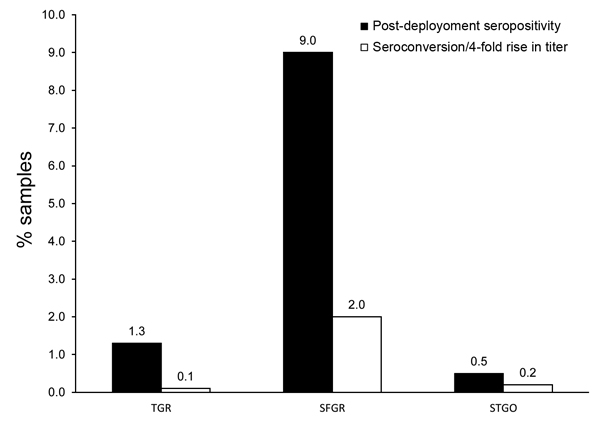Volume 21, Number 6—June 2015
Letter
Seroconversions to Rickettsiae in US Military Personnel in South Korea
Figure

Figure. Evidence of rickettsiosis or scrub typhus among US military personnel deployed to South Korea. Black bars indicate postdeployment serum samples from US military personnel with a titer ≥1:100 (seropositive) to typhus group rickettsiae (TGR), spotted fever group rickettsiae (SFGR), or scrub typhus group orientia (STGO) IgG, as determined by ELISA. White bars indicate personnel determined by paired serum sample analyses to have seroconversion or 4-fold rise in titer between predeployment and postdeployment serum samples, indicating evidence of infection with the corresponding pathogen during deployment.
Page created: May 18, 2015
Page updated: May 18, 2015
Page reviewed: May 18, 2015
The conclusions, findings, and opinions expressed by authors contributing to this journal do not necessarily reflect the official position of the U.S. Department of Health and Human Services, the Public Health Service, the Centers for Disease Control and Prevention, or the authors' affiliated institutions. Use of trade names is for identification only and does not imply endorsement by any of the groups named above.